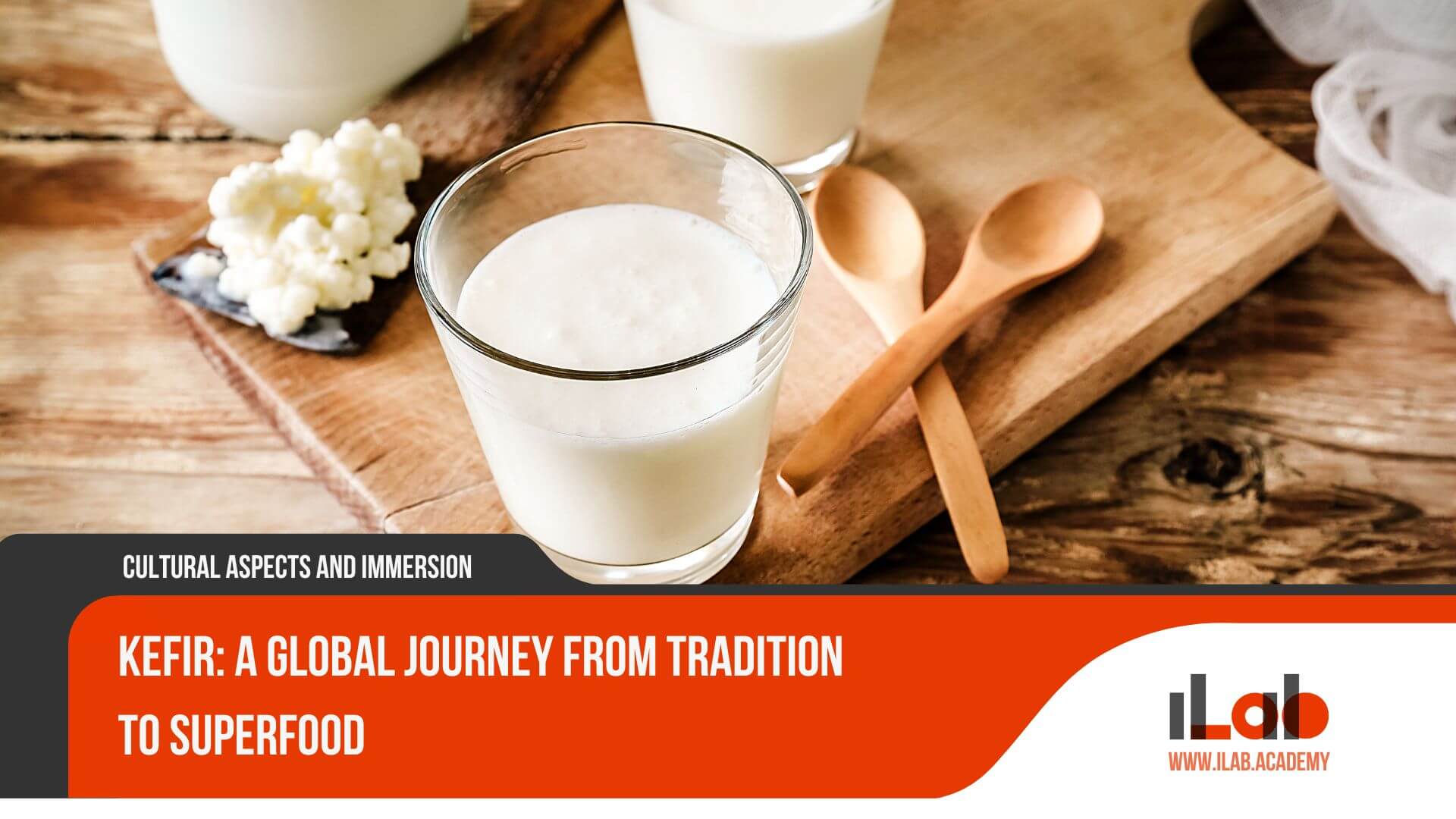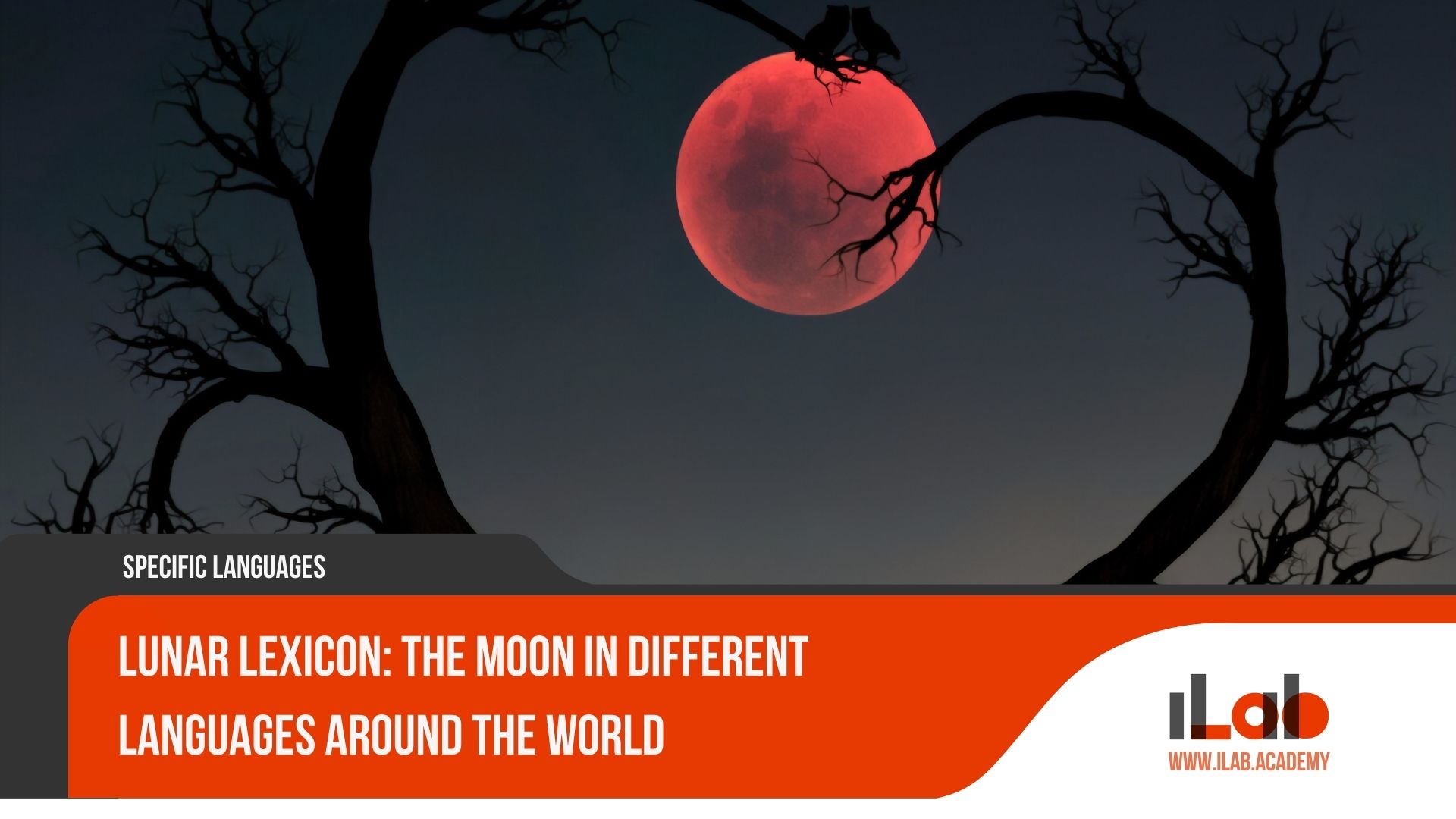Table of contents
Kefir, originating in the Caucasus Mountains and discovered by nomadic shepherds, is now recognized as a global superfood. This fermented drink thrives thanks to its powerful probiotics, supporting gut health and the immune system. Traditional methods blend seamlessly with modern techniques, ensuring optimal fermentation. Linguistically, “kefir” has become a symbol of nourishment and cultural heritage across languages. It features prominently in modern diets, with its rich history and health benefits inspiring global culinary applications. Curious about how kefir’s journey from ancient tradition to modern superfood influences today’s health-conscious lifestyles? There’s much more to its story.
Key Takeaways
- Kefir originated in the Caucasus Mountains and was discovered by nomadic shepherds.
- Traditional kefir production methods have evolved, integrating modern advancements for optimal fermentation.
- Kefir’s probiotic properties support gut health, immune system, and overall well-being.
- Kefir holds cultural symbolism of nourishment and community, revered as a gift from the gods.
- Globally recognized as a superfood, kefir has diverse culinary applications and promotes a healthier lifestyle.
The Origins and Spread of Kefir
Kefir’s origins trace back to the North Caucasus Mountains, where it has been a staple for centuries. How did this ancient elixir travel from remote regions to become a global phenomenon? Understanding its journey beyond borders reveals a fascinating narrative of cultural exchange and modern appreciation.
The Ancient Roots
Tracing back to the rugged landscapes of the Caucasus Mountains, the origins of kefir reveal a rich tapestry of history and cultural exchange. This fermented milk drink, revered for its unique taste and health benefits, has been a staple in the diets of the indigenous people of this region for centuries. The word “kefir” itself is derived from the Turkish word “keyif,” which means “feeling good,” underscoring the positive effects it has on those who consume it.
In ancient times, nomadic shepherds discovered that fresh milk carried in leather pouches would naturally ferment into a tangy, effervescent beverage. These early kefir grains, a symbiotic culture of bacteria and yeast, were closely guarded family secrets, handed down through generations. The residents of the Caucasus believed that kefir grains were a gift from the gods, bestowing health and longevity upon those who consumed it regularly.
How did this ancient elixir remain a well-kept secret for so long? The isolation of the mountainous terrain played a crucial role in preserving the traditional methods of kefir production. Today, as we explore kefir’s ancient roots, we gain a deeper appreciation for this remarkable drink and its enduring legacy.
Kefir’s Journey Beyond Borders
The spread of kefir beyond the Caucasus Mountains is a testament to its enduring appeal and the growing appreciation for its health benefits across various cultures. Originating from the rugged regions of Eastern Europe and Western Asia, kefir has transcended geographical boundaries to become a global phenomenon. But how did this fermented drink make such a remarkable journey?
For centuries, kefir was a well-guarded secret among the people of the Caucasus. However, its unique taste and reported health benefits eventually piqued the interest of travelers and traders. By the 19th century, Russian doctors began to explore kefir’s potential in treating ailments, leading to wider recognition and acceptance. As the world became more interconnected through trade and migration, kefir found its way onto the tables of households far beyond its place of origin.
Today, kefir is celebrated worldwide as a superfood, lauded for its probiotic properties and versatility. Its creamy texture and tangy flavor make it a favorite ingredient in smoothies, salad dressings, and even baked goods. The journey of kefir from a traditional beverage to a modern-day health elixir underscores the power of cultural exchange and the universal quest for wellness.
The Linguistic Landscape of Kefir
The term ‘kefir‘ carries a rich history and varied interpretations across cultures and languages. How did this name come to be, and what does it signify in different parts of the world? By exploring the origins and the global lexicon of ‘kefir,’ we can appreciate its cultural significance and the nuances it brings to our understanding of this ancient beverage.
Unraveling the Name “Kefir”
Etymologically rooted in the Turkish word ‘keyif’, which means ‘feeling good’, the name ‘kefir’ carries a linguistic history as rich as its cultural significance. This connection to well-being reflects the ancient belief in kefir’s health benefits, which have been celebrated for centuries. The word itself serves as a testament to the beverage’s enduring legacy across cultures.
Kefir’s name illustrates a fascinating journey through languages and regions. Consider the following points:
- Turkish Origins: The term ‘keyif’ epitomizes the sensation of contentment, directly linking the name to its perceived health benefits.
- Historical Spread: The name traveled through the Caucasus Mountains, where it was embraced by different ethnic groups, each adding their unique spin.
- Cross-Cultural Influence: As kefir became more widespread, various languages adopted and adapted the name, reflecting local pronunciations and dialects.
- Modern Relevance: Today, ‘kefir’ is recognized globally, symbolizing both tradition and modern nutritional science.
Understanding the evolution of the name ‘kefir’ helps us appreciate its cultural and historical depth. It’s a reminder of how something as simple as a name can encapsulate centuries of human experience and the shared pursuit of health and happiness. So, next time you enjoy a glass of kefir, remember its rich heritage that spans across continents and generations.
Kefir in the Global Lexicon
In numerous languages around the world, the word ‘kefir‘ has been adapted to fit local phonetics and cultural contexts, illustrating its widespread acceptance and integration. From the Middle East to Asia, and from Europe to the Americas, this transformation not only signifies linguistic diversity but also reflects the growing global popularity of kefir as a health beverage.
The term ‘kefir’ originates from the Turkish word ‘keif,’ meaning ‘good feeling,’ and this sense of well-being is echoed in the varied adaptations. For instance, in Russian, it remains ‘кефир’ (kefir), closely mirroring the original pronunciation. In Spanish-speaking countries, it is often pronounced as ‘keh-feer,’ while in Japan, it is adapted to ‘ケフィール’ (kefīru), aligning with their phonetic system.
Why does this matter? It showcases the universal appeal of kefir and its ability to transcend cultural boundaries. As you encounter kefir in different regions, notice its local name and pronunciation. This linguistic journey underscores kefir’s role not just as a superfood but as a cultural bridge connecting diverse communities. So next time you enjoy a glass of kefir, think about its global journey and the myriad ways it has been embraced worldwide.
The Art of Making Kefir
Understanding the art of making kefir requires an appreciation of both traditional techniques and modern innovations. How do age-old practices blend seamlessly with contemporary methods to produce this probiotic-rich beverage? Exploring the science behind fermentation reveals the fascinating processes that transform simple ingredients into a healthful drink enjoyed worldwide.
Traditional Techniques Meet Modern Innovations
Blending time-honored practices with contemporary advancements, the art of making kefir has evolved significantly, reflecting both cultural heritage and scientific progress. Traditionally, kefir was prepared in animal hide bags, hung near doorways, and periodically shaken by those passing by. This method, while effective, has been largely replaced by modern techniques that offer greater consistency and ease of production.
Today’s kefir-making process benefits from innovations such as precise temperature controls and advanced fermentation vessels that ensure optimal conditions for the growth of kefir grains. These grains, a symbiotic culture of bacteria and yeast, remain at the heart of kefir’s transformation, bridging the gap between ancient tradition and modern science.
Key aspects of this evolution include:
- Enhanced Sanitation Standards: Modern equipment and practices reduce contamination risks, ensuring a purer and safer product.
- Controlled Fermentation Environment: Temperature and humidity controls allow for precise management of the fermentation process.
- Automated Production Systems: Streamlined, automated systems facilitate large-scale production without compromising quality.
- Nutrient Enrichment: Innovations in ingredient sourcing and supplementation enhance the nutritional profile of kefir.
As we embrace these advancements, we honor the rich history of kefir while propelling it into the future, making it more accessible and beneficial for all.
The Science Behind Fermentation
Delving into the science behind fermentation reveals the intricate biological processes that transform simple ingredients into the complex, probiotic-rich beverage known as kefir. At the heart of this transformation are kefir grains, which are not grains in the traditional sense but rather a symbiotic culture of bacteria and yeasts (SCOBY). When added to milk, these grains initiate a fermentation process that can last from 12 to 48 hours, depending on various factors such as temperature and desired flavor.
During fermentation, lactose in milk is metabolized by lactic acid bacteria into lactic acid, which gives kefir its characteristic tangy taste. Concurrently, yeasts convert sugars into ethyl alcohol and carbon dioxide, contributing to kefir’s slight effervescence. The result is a drink teeming with beneficial microorganisms, which can promote gut health and boost the immune system.
Understanding these processes encourages a deeper appreciation of kefir’s nutritional benefits. Imagine the microscopic world buzzing with activity, each organism playing a pivotal role in crafting this healthful elixir. So next time you sip on kefir, remember the science that makes this superfood possible. Isn’t it fascinating how nature works its magic?
The Health Elixir of Kefir
Kefir has gained recognition as a health elixir due to its impressive probiotic power and rich nutritional profile. Packed with beneficial bacteria and essential nutrients, it supports gut health and overall well-being. How has kefir positioned itself at the forefront of modern health trends, and what makes it a staple in many wellness routines?
Probiotic Power and Nutritional Profile
Rich in beneficial bacteria and yeasts, kefir stands out as a potent probiotic beverage with a robust nutritional profile. This ancient drink, originating from the Caucasus Mountains, offers a symbiotic blend of microorganisms that provide numerous health benefits. Probiotics are essential for maintaining a balanced gut flora, which in turn supports digestion, boosts the immune system, and enhances overall well-being.
Kefir is not just about probiotics. It is also a nutritional powerhouse, packed with essential vitamins, minerals, and proteins. This tangy beverage is an excellent source of:
- B Vitamins, which are vital for energy production and nervous system health.
- Calcium and Magnesium, crucial for bone health and muscle function.
- Complete Proteins, containing all nine essential amino acids necessary for tissue repair and growth.
- Bioactive Compounds, including peptides and polysaccharides, which have antioxidant and anti-inflammatory properties.
Why is kefir so effective? Its diverse microbial content allows it to colonize the gut more efficiently than many other probiotics. Have you ever wondered why some foods just make you feel better? Kefir’s unique composition might be the answer. Incorporating kefir into your diet can be a simple yet profound step towards a healthier lifestyle.
Kefir’s Role in Modern Health Trends
As modern health trends increasingly emphasize gut health and holistic wellness, kefir has emerged as a celebrated elixir, seamlessly blending ancient tradition with contemporary nutritional science. This fermented milk drink, rich in probiotics, plays a pivotal role in promoting digestive health. By fostering a balanced gut microbiome, kefir aids in digestion and enhances nutrient absorption, making it an essential addition to a health-conscious diet.
Why is kefir gaining popularity among those pursuing wellness? Its rich profile of vitamins, minerals, and beneficial bacteria supports immune function, potentially reducing the risk of common illnesses. Moreover, kefir’s anti-inflammatory properties can help mitigate conditions like irritable bowel syndrome and other gastrointestinal disorders.
In the era of fast-paced lifestyles, incorporating kefir into daily routines is both simple and rewarding. Drink it straight, blend it into smoothies, or use it as a base for salad dressings. The options are as diverse as the benefits it offers.
Ultimately, kefir’s resurgence in modern health trends underscores a broader movement towards natural, time-honored remedies. Embrace this health elixir and experience the symbiotic blend of tradition and modern wellness. Are you ready to make kefir part of your daily ritual?
Kefir in World Cuisine
Kefir’s versatility extends well beyond its health benefits, making it a star ingredient in a variety of global cuisines. Imagine blending kefir into your morning smoothie or using it as a base for a tangy salad dressing. How can we further explore its potential in fusion recipes, integrating kefir with diverse cultural flavors from around the world?
Incorporating Kefir into Everyday Dishes
How can kefir elevate traditional dishes from various cuisines around the world? This versatile, fermented dairy product offers a unique tangy flavor and a rich probiotic content that can enhance both taste and nutritional value. Integrating kefir into everyday dishes not only diversifies your palate but also brings a multitude of health benefits.
Consider these applications:
- Salad Dressings: Replace buttermilk or yogurt in dressings with kefir to add a zesty twist and creamy texture, enriching your greens with probiotics.
- Smoothies: Swap regular milk or yogurt with kefir in your smoothies for an extra boost of nutrients and a delightful tang, making your morning routine healthier.
- Marinades: Use kefir as a base for marinades to tenderize meats while infusing them with a subtle, complex flavor profile that enhances the overall dish.
- Baking: Substitute kefir for milk or buttermilk in baking recipes like muffins, pancakes, or bread to achieve a moist, tender crumb and a slight tang that balances sweetness.
Incorporating kefir into your culinary repertoire not only enhances the flavors of your favorite dishes but also contributes to a balanced diet. Embrace this ancient superfood to transform ordinary meals into extraordinary culinary experiences.
Fusion Recipes: Kefir Meets Global Flavors
Integrating kefir into global cuisines opens up a world of innovative fusion recipes that celebrate diverse flavors and culinary traditions. Whether you are blending it into smoothies, using it in marinades, or incorporating it into baked goods, kefir’s tangy taste and probiotic benefits add a unique twist to traditional dishes from around the globe.
Imagine the creamy richness of Indian lassi combined with kefir’s probiotic punch, or the vibrant flavors of Mexican salsas enhanced by a kefir-based dressing. The versatility of kefir makes it a valuable addition to both sweet and savory recipes, allowing culinary enthusiasts to experiment and create dishes that are not only delicious but also health-boosting.
Consider the following fusion recipes that showcase how kefir can elevate global flavors:
| Recipe | Description |
|---|---|
| Kefir Tzatziki | A Greek classic with a probiotic twist, perfect as a dip or spread. |
| Kefir Mango Lassi | A refreshing Indian drink with a tangy and nutritious upgrade. |
| Kefir-Infused Tacos | Mexican street food meets healthy kefir, enhancing the flavors. |
These recipes are just the beginning. By integrating kefir into your kitchen, you can explore and enjoy a myriad of vibrant, global flavors while reaping the health benefits of this superfood.
The Cultural Significance of Kefir
Kefir holds a unique place in both folk traditions and modern practices, serving as a symbol of health and longevity across various cultures. How has this ancient beverage maintained its relevance in cultural narratives over centuries? Exploring the roles kefir plays in communal rituals and everyday life reveals its enduring significance and adaptability in a changing world.
Kefir in Folk Traditions and Modern Practices
Throughout history, the cultural significance of kefir has been deeply embedded in various folk traditions and has seamlessly transitioned into modern practices around the world. Originating from the Caucasus Mountains, kefir was historically regarded as a symbol of prosperity and health. Communities would often share kefir grains as a token of goodwill, weaving it into the fabric of their social rituals.
Today, kefir’s cultural legacy endures, blending ancient customs with contemporary health trends. Modern practices celebrate kefir not only for its probiotic benefits but also for its versatile culinary applications. It is enjoyed in smoothies, salad dressings, and even as a substitute for buttermilk in recipes. This harmonious blend of tradition and innovation highlights kefir’s enduring appeal.
- Nutritional Powerhouse: Packed with probiotics, vitamins, and minerals, kefir supports gut health and overall well-being.
- Culinary Versatility: Kefir’s tangy flavor and creamy texture make it a favorite in both savory and sweet dishes.
- Cultural Legacy: From its origins in the Caucasus to its global dissemination, kefir has been a symbol of health and hospitality.
- Modern Adaptations: Contemporary enthusiasts incorporate kefir into diets for its health benefits, showcasing a bridge between ancient practices and modern wellness trends.
Embrace kefir’s rich history and versatile applications as you explore its place in both past and present cultures.
The Symbolism of Kefir in Cultural Narratives
In many cultures, kefir symbolizes not only nourishment and health but also community and tradition. Its roots extend deep into the Caucasus Mountains, where it was considered a gift from the gods, shared among families to ensure vitality and well-being. The act of passing down kefir grains from generation to generation represents continuity and the preservation of heritage.
Kefir also serves as a social glue, bringing people together in communal settings. Imagine a gathering where neighbors and friends share stories over a refreshing glass of this probiotic drink. Such scenes are commonplace in various cultures, where kefir is more than a beverage—it is a symbol of unity and shared experience.
But why does kefir hold such a revered place in these narratives? Its health benefits, from improved digestion to enhanced immunity, underscore its role as a life-sustaining element. Moreover, the meticulous process of fermenting kefir mirrors the patience and care inherent in nurturing relationships and communities.
Thus, kefir is not merely a drink; it is a narrative thread weaving together stories of heritage, health, and human connection. How will you incorporate this ancient elixir into your life?
The Linguistic Journey of Kefir
The linguistic journey of kefir is as rich and varied as the cultures that have embraced it. Its etymological roots trace back to the Turkish word “keif,” meaning “good feeling,” reflecting its long-standing reputation as a healthful beverage. How has the word ‘kefir’ evolved and been adopted in different languages around the world?
Kefir’s Etymological Roots
Kefir’s etymological roots trace back to the North Caucasus region, where the term ‘kefir’ is derived from the Turkish word ‘keif,’ meaning ‘pleasure’ or ‘good feeling.’ This linguistic heritage underscores the cultural significance and positive connotations associated with this fermented beverage, which has been celebrated for its health benefits and unique taste for centuries.
The journey of the word ‘kefir’ reflects the historical interactions between different cultures and their shared appreciation for this probiotic-rich drink. Understanding the etymological origins of kefir provides valuable insights into its longstanding presence in human diets and its evolution into a modern superfood.
- Historical Significance: The adoption of the term ‘keif’ highlights the beverage’s role in traditional diets of the North Caucasus and its perceived health benefits.
- Cultural Exchange: The spread of kefir and its name illustrates the cultural exchanges between the Turkish and neighboring regions.
- Linguistic Evolution: The transformation of ‘keif’ to ‘kefir’ exemplifies how words adapt and evolve over time, reflecting broader historical and social changes.
- Modern Relevance: Today’s global recognition of kefir as a superfood connects back to its etymological roots, emphasizing its enduring appeal.
Understanding kefir’s linguistic journey enhances our appreciation for this ancient, yet timeless, beverage.
The Word “Kefir” in Different Languages
Exploring how the word ‘kefir‘ is expressed in various languages reveals not only the geographical spread of this beloved drink but also the diverse cultural landscapes that have embraced it. In English, ‘kefir’ is straightforward, derived directly from the Russian кефир (kefir). This highlights its journey from Eastern Europe to the Western world.
In Turkish, the drink is called ‘kefir’ as well, reflecting its origins from the Caucasus Mountains, where it has been consumed for centuries. In Russian and other Slavic languages, the term remains ‘кефир’ (kefir), which denotes not just the drink, but also a cultural heritage of fermented foods.
Interestingly, in some parts of the Middle East, particularly Iran, it is referred to as ‘doogh-e kefir,’ blending local language with the international term. In Japan, it is called ケフィール (kefiru), demonstrating the adaptability of the word to different scripts and phonetics.
How do these linguistic variations influence your understanding of kefir’s history? They underscore the global resonance of this nutritious drink. As we trace the word ‘kefir’ across languages, we uncover a tapestry of shared human experience, culinary innovation, and the universal quest for health and wellness.
Conclusion
Kefir’s global journey from a traditional beverage to a celebrated superfood highlights its rich cultural heritage and health benefits. Its diverse linguistic roots and artisanal production methods underscore its universal appeal. As more cuisines incorporate kefir, its cultural significance continues to grow. Embracing kefir not only enriches diets but also connects individuals to a shared global tradition. Discovering kefir’s myriad advantages encourages an appreciation for both history and health, fostering a deeper connection to this remarkable elixir.














